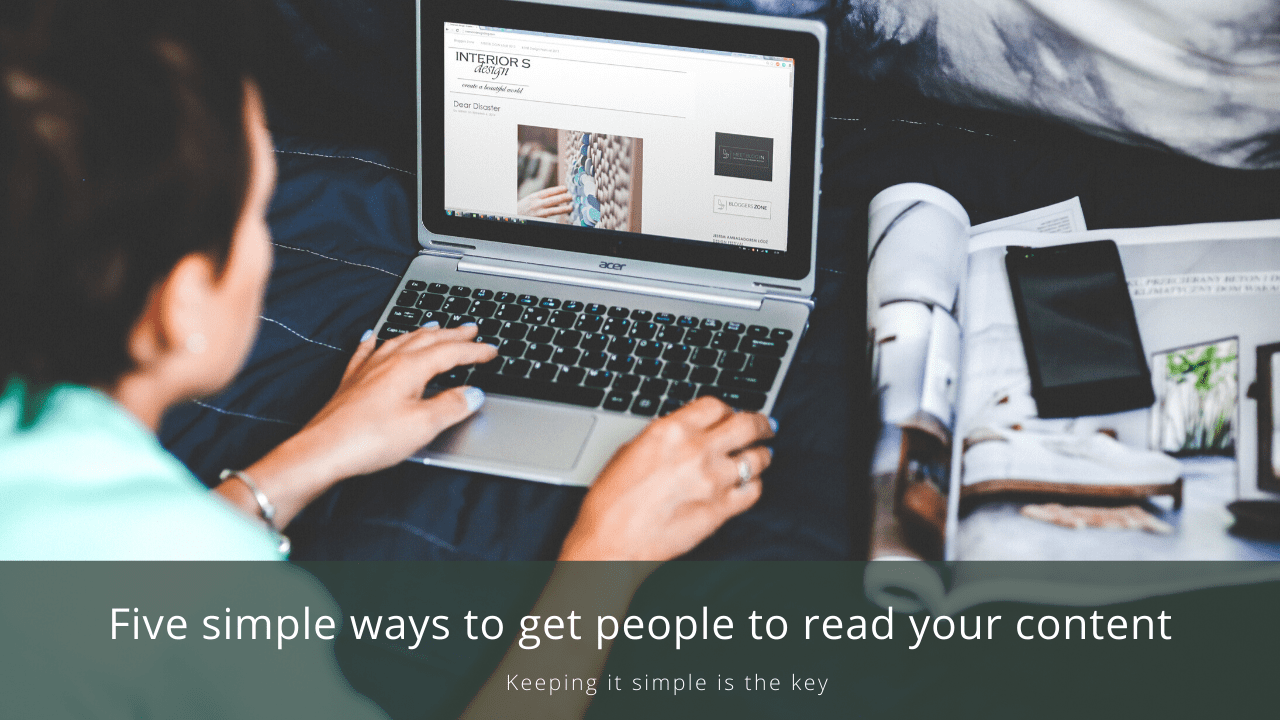In the year 1996, Bill Gates stated: “Content is King.” Such was the title of the essay he published on Microsoft’s website at the time. The digital marketing industry swears by this mantra. Admittedly, it’s current usage is not directly related to Gates’ original point. In today’s digital era, it relates to how important relevant content is to stand out from the crowd.
We discuss tips for writing like a content marketing pro.
With the switch from outbound marketing to an inbound approach, content drives customer interaction. It draws people in and retains them. It shows you’re the expert and keeps customers coming back.
But the real question is how do you get people to read your content? Remember, when it comes to getting people to read your content, it is not just what you say but how you say it that matters. Fortunately, there are some simple tips that can help you improve readability.
Keep your paragraphs short

The following tips generally cater to one key fact. People don’t read web pages word by word. In fact, as much as 79% of people scan text. Bear in mind; this study was conducted very shortly after Bill Gates’ “Content is King” essay. Over time, this figure has likely increased.
If people are scanning text, you should limit your ideas or points to one per paragraph. If you include more than one or bury it deep within the text, readers will likely miss it.
You can even use single-sentence paragraphs to grab the reader’s attention!
Create compelling subheadings
Subheadings have a number of core functions within written content. Arguably, they’re as critical to readability as your main headline.
Firstly, it’s worth noting that “compelling” doesn’t mean “clickbaity.” Today’s readers are less likely to buy into irrelevant headings designed only to catch the eye. Try to avoid superlative language that could diminish your reader’s respect. A meaningful subheading is much better than a “clever” one, so avoid the temptation.
Subheadings work as mini headlines that can keep a reader moving down the whole text. For this reason, they should be as engaging as your main headline while remaining on-topic. A good test is to plan out your headings in advance and take an objective glance at them. As a reader who’s scanning, would you get the gist of the article?
Use bullet points
Bulleted lists are an excellent way to boost the readability of your written content:
- The difference in formatting makes them pop out from the rest of the text.
- They make it easy for readers to scan and digest multiple points.
- They have a variety of different uses throughout a piece of content.
To elaborate on that final point, you can use bullets for different purposes depending on how you apply them. If your content is long-form, use them at the beginning to summarise what the reader will learn. At times, you’ll need to prove your expertise by backing up your points with statistics. Listing stats in a sentence or paragraph is messy and unsuitable for scanners – use bullet points instead.
You can also use them effectively at the end of your content as a type of cliffhanger. What will the reader learn if they read your next article or sign up for more content? Use bullets to highlight the most engaging bits!
Simple formatting is the key
With formatting, less is always more. You’ll only need to make a few formatting decisions to increase readability. Ideally, stick with one clear font throughout. A second font for headings can work if it fits with your branding. More than two fonts will decrease readability.
Make your headings bold and increase their size to a few points above the body text size. They should catch the reader’s eye without drawing all their focus from the main content. Use italics for quotes or captions if you like, but make sure it doesn’t dilute your message.
Finally, increase the line spacing a little. Visually, it will make your content appear less dense. In turn, this will allow readers to glean more information by scanning.
We talk about how to keep old blog posts evergreen.
Use relevant images
They’re not lying when they say a picture tells a thousand words. Images break up the text, visually engage readers, and portray a lot of information in a small space.
Additionally, images are crucial for increasing shareability. Need proof? Facebook posts that include photos are responsible for 87% of all interactions on the site.
You should always include an eye-catching image right at the top of your content with your heading. In an ideal world, you’ll also have an image for each of your subheadings. It may not be possible to use original photos each time. If you do need to use stock photos and imagery, make sure they’re relevant to your content and brand image.
******
You might be surprised at how simple these steps are, but simplicity is the key to readability. Once you understand how people approach content online, it is not difficult to cater to them. If you remember the above points every time you publish, you’ll find it easy to turn scanners into readers.
If you’re curious to learn more about content marketing and PR or want to speak to a SYNC consultant about starting your brand’s PR journey, contact us at hello@syncpr.co
This article has been updated on 5 June 2020

